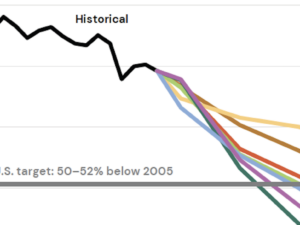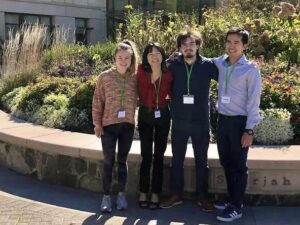Dr. Katharine Hayhoe talks “Saving Us” with CCL
By Katie Zakrzewski
At the end of October, climate scientist and CCL advisory board member Dr. Katharine Hayhoe held an exclusive Q&A with CCL on her new book, “Saving Us.”
In “Saving Us,” Dr. Hayhoe argues that when it comes to changing peoples’ minds on climate change, facts are only half the battle: we have to find common ground in order to connect a host of diverse and unique identities to collective action. “Saving Us” provides a look at science, faith, and psychology, and how these factors come together to impact climate action.
Watch the Q&A here, or read on for the highlights:
Why is the book called ‘Saving Us’?
“Normally when you see a book about climate change, you’re going to see it called something like ‘Saving the Planet,’ or ‘Saving the Trees,’ or Saving the Whales.’ I called it ‘Saving Us’ because it is not about saving the planet,” Dr. Hayhoe explains. “The planet will be orbiting the sun long after we are gone…the planet doesn’t need us. In fact, it might be better off, arguably, without us. We are the ones who need to be saved.”
What gives Dr. Hayhoe hope?
Dr. Hayhoe acknowledges that in an era of political divide, social injustice, and economic uncertainty, it can be hard to find hope. But she explains that the hope she has is a unique one.
“I’m talking about a hope where we look the problem in the face, recognize that things are bad, and we recognize what is at stake,” Dr. Hayhoe says. “What hope offers is the chance of a better future. And what determines that chance? How hard we fight for it.”
How do we get people to care about climate change, and to act?
Dr. Hayhoe says, “To care about climate change, we only have to be one thing: a human being living on planet earth.”
Still, there can be uncertainty on how to dive into tackling an issue so broad. “In the U.S., over 50 percent of people feel helpless and don’t know where to start when it comes to climate action,” Dr. Hayhoe explains. “Until they come to Citizens’ Climate Lobby. You are meeting the exact needs that people have.”
One of the greatest antidotes to despair, Dr. Hayhoe explains, is action. “Action and hope are intimately connected. What gives us hope? When we know what to do. Where do we start? It’s not educating people that global warming is happening…it’s that we’re not talking about it.”
How do we talk about climate change?
Dr. Hayhoe further explains another reason why she wrote “Saving Us”: to guide people on how to talk to others about climate change. “We can’t just overload people with scary facts. If people are overwhelmed and don’t know what to do or how to fix it, they’ll disassociate.”
Dr. Hayhoe acknowledges that people who are involved in their communities might not have climate change on their to do list. “People have very good priorities, and they think that climate change can wait. But climate change is an everything issue. It affects everything on our list.”
She encourages people to start climate conversations by talking about who they are with people like them, whether they’re a dancer, knitter, gardener, musician or a hockey player. If you can connect to people on a basic concrete level who share passions with you, you can talk about the positive things that are already happening in climate.
It’s easier to advocate for change when you’re doing it with other people. That, Dr. Hayhoe says, is where CCL and CCL volunteers do an excellent job changing the face of climate discussion.
To see the rest of Dr. Hayhoe’s climate presentation and Q&A, check out this video.






